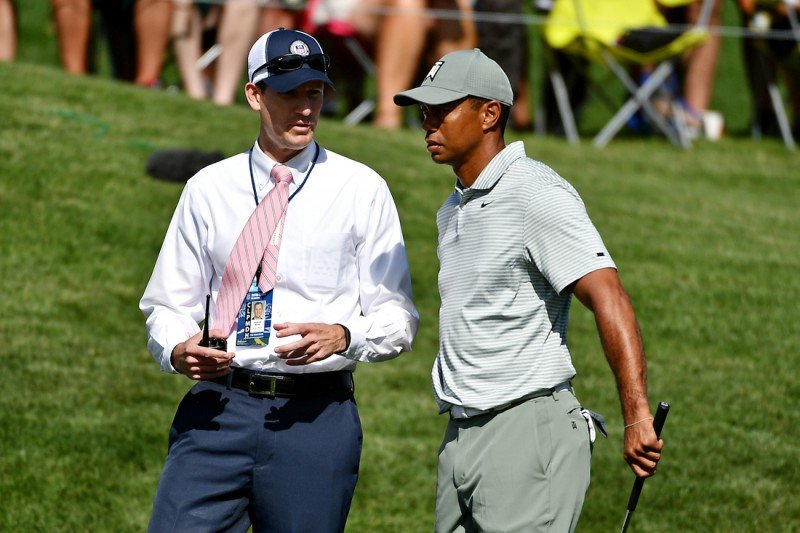The PGA Tour is moving forward with changes to their pace-of-play policy which will, in concept, more aggressively target slow players and give rules officials authority to punish players with strokes and fines more frequently.
The new policy was approved by the player policy board and goes into effect in April at the RBC Heritage (the week after the Masters).
PGA Tour commissioner Jay Monahan said at the 2020 Sony Open in Hawaii that the new policy isn’t particularly designed to speed up the length of rounds. Tour officials maintain ShotLink data shows round times haven’t much changed since the data tracking began in 2003.
However, it appears the changes are designed to improve the flow of rounds from shot to shot, particularly on approach shots and shots around the green. According to ShotLink data, the slowest 10 percent of players take an average of 63 seconds to play shots around the greens. That’s 25 seconds more on average than players in the fastest 10 percent. The slowest 10 percent of players take an average of 55 seconds to hit approach shots, when, under the pace-of-play policy, they’re to take 40 seconds.
The new pace-of-play policy, then, is more concerned with individuals rather than groups which are dubbed “out of position.” The Tour will create a private (even unknown to the players) so-called “observation list” of players to track. Players qualify for the list in a variety of ways, including averaging 45 or more seconds per stroke on a rolling 10-event period.
If a player is observed by an official taking longer than 60 seconds to take any stroke in a round, unless there’s a valid reason, that player will then be timed for each shot for two holes once they’re notified by an official. Provided a player does not have a “bad time” — basically, 60 seconds being first to play a shot (tee shot, approach, around the green or putt) or 40 seconds thereafter — for two holes, they won’t be timed further.
If a player is observed by an official taking more than 120 seconds on any shot without a valid reason, they will be told they have taken an “excessive shot time” and will be timed throughout aspects of the round by an official. They will be subject to the “bad time” guidelines.
If a player receives two “bad times” in a tournament, they’ll get a one-stroke penalty. Subsequent “bad times” in a single tournament will tack on additional penalties – one per occurrence.
Players can be timed in-tournament but not make the list. However, if a player receives two “excessive shot times” in a tournament, they will land on the observation list. Players will be fined $10,000 for their second “excessive shot time” and $20,000 more each subsequent offense. Players receiving more than one “bad time” once under observation will receive a $50,000 fine for the second offense and $20,000 more for each subsequent offense.
Excessive Shot Times will receive $10,000 and $20,000 punishments for second and additional offenses (with the first offense receiving a warning). Though the first bad time also gets a warning, a second offense comes with a $50,000 penalty, with a $20,000 penalty attached to further offenses.


PGA should allow caddies to use lasers to acquire yardage numbers in seconds. We live in a tech world now! That would also speed up play.